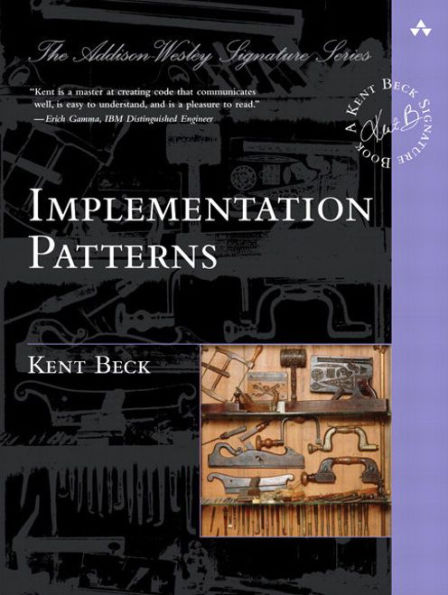Software Expert Kent Beck Presents a Catalog of Patterns Infinitely Useful for Everyday Programming
Great code doesn’t just function: it clearly and consistently communicates your intentions, allowing other programmers to understand your code, rely on it, and modify it with confidence. But great code doesn’t just happen. It is the outcome of hundreds of small but critical decisions programmers make every single day. Now, legendary software innovator Kent Beck—known worldwide for creating Extreme Programming and pioneering software patterns and test-driven development—focuses on these critical decisions, unearthing powerful “implementation patterns” for writing programs that are simpler, clearer, better organized, and more cost effective.
Beck collects 77 patterns for handling everyday programming tasks and writing more readable code. This new collection of patterns addresses many aspects of development, including class, state, behavior, method, collections, frameworks, and more. He uses diagrams, stories, examples, and essays to engage the reader as he illuminates the patterns. You’ll find proven solutions for handling everything from naming variables to checking exceptions.
Software Expert Kent Beck Presents a Catalog of Patterns Infinitely Useful for Everyday Programming
Great code doesn’t just function: it clearly and consistently communicates your intentions, allowing other programmers to understand your code, rely on it, and modify it with confidence. But great code doesn’t just happen. It is the outcome of hundreds of small but critical decisions programmers make every single day. Now, legendary software innovator Kent Beck—known worldwide for creating Extreme Programming and pioneering software patterns and test-driven development—focuses on these critical decisions, unearthing powerful “implementation patterns” for writing programs that are simpler, clearer, better organized, and more cost effective.
Beck collects 77 patterns for handling everyday programming tasks and writing more readable code. This new collection of patterns addresses many aspects of development, including class, state, behavior, method, collections, frameworks, and more. He uses diagrams, stories, examples, and essays to engage the reader as he illuminates the patterns. You’ll find proven solutions for handling everything from naming variables to checking exceptions.

Implementation Patterns
176
Implementation Patterns
176Related collections and offers

Product Details
| ISBN-13: | 9780132702553 |
|---|---|
| Publisher: | Pearson Education |
| Publication date: | 10/23/2007 |
| Series: | Addison-Wesley Signature Series (Beck) |
| Sold by: | Barnes & Noble |
| Format: | eBook |
| Pages: | 176 |
| File size: | 4 MB |
| Age Range: | 18 Years |
